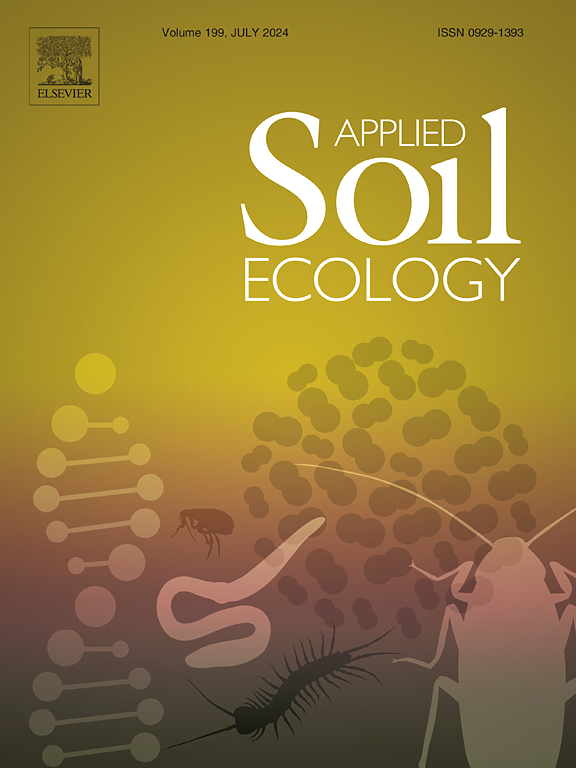Pesticide use and soil disturbance shape springtail communities in vineyards
IF 4.8
2区 农林科学
Q1 SOIL SCIENCE
引用次数: 0
Abstract
Farming practices are known to affect soil fauna, which are essential for soil functioning. However, we lack quantitative assessment of the effect of several key farming practices, such as pesticide use or soil disturbance on several important soil taxa. In perennial crops such as vineyards, soil tillage and pesticide use are very intensive and may have major impacts on soil fauna. However, studies on such systems remain scarce. The aim of this study is to assess the response of springtail communities to soil management and pesticide use, while considering key physico-chemical parameters on 32 organic and conventional vineyards located in the southwest France. Our analyses revealed that soil organic matter and soil tillage had a positive impact on functional and taxonomic diversities of springtails. In addition, we found that the intensity of pesticide use and the diversity of active ingredients in particular, decreased the diversity of springtail communities. Surprisingly, soil copper concentration had no effect on abundance or diversity of springtail communities. Our study suggests that superficial tillage and less intensive pesticide applications can favor taxonomic and functional diversity of springtails, independently of certification schemes. Future studies should now investigate how these changes in community composition and diversity affect soil functioning.
农药使用和土壤扰动影响葡萄园中的春尾群落
众所周知,耕作方式会影响对土壤功能至关重要的土壤动物。然而,我们缺乏对几种主要耕作方式(如农药使用或土壤扰动)对几种重要土壤分类群影响的定量评估。在葡萄园等多年生作物中,土壤耕作和杀虫剂的使用非常密集,可能会对土壤动物群产生重大影响。然而,对这类系统的研究仍然很少。本研究的目的是评估位于法国西南部的 32 个有机葡萄园和传统葡萄园中的春尾动物群落对土壤管理和农药使用的反应,同时考虑关键的物理化学参数。我们的分析表明,土壤有机质和土壤耕作对春蜱的功能和分类多样性有积极影响。此外,我们还发现,农药使用的强度,特别是有效成分的多样性,降低了春尾虫群落的多样性。令人惊讶的是,土壤中的铜浓度对春尾虫群落的丰度和多样性没有影响。我们的研究表明,表层耕作和较低强度的杀虫剂施用可以促进春尾草的分类和功能多样性,而与认证计划无关。今后的研究应探讨群落组成和多样性的这些变化如何影响土壤功能。
本文章由计算机程序翻译,如有差异,请以英文原文为准。
求助全文
约1分钟内获得全文
求助全文
来源期刊

Applied Soil Ecology
农林科学-土壤科学
CiteScore
9.70
自引率
4.20%
发文量
363
审稿时长
5.3 months
期刊介绍:
Applied Soil Ecology addresses the role of soil organisms and their interactions in relation to: sustainability and productivity, nutrient cycling and other soil processes, the maintenance of soil functions, the impact of human activities on soil ecosystems and bio(techno)logical control of soil-inhabiting pests, diseases and weeds.
 求助内容:
求助内容: 应助结果提醒方式:
应助结果提醒方式:


